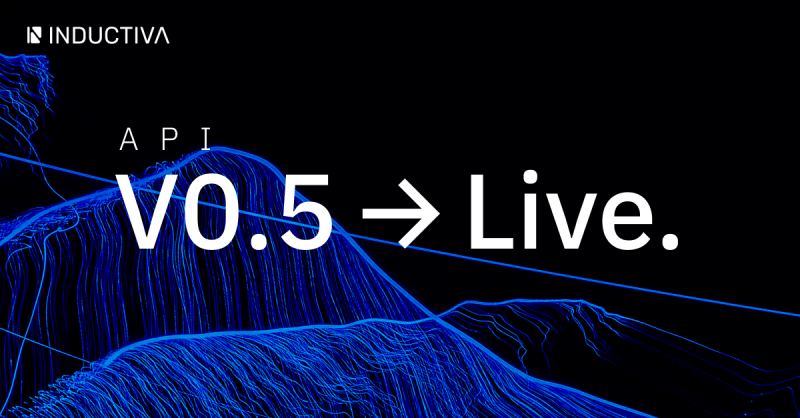Generating Synthetic Data for Physics-ML with Inductiva API IV - Generalize the "Base Case" Physical Parameters




Quick Recap
In previous chapters of this tutorial, we set up a “base case” simulation of a simple “fluid in a box” scenario using SPlisHSPlasH, dropping a
0.5m block of water into a box from one of its top corners and letting it flow
for 4 seconds. Then, we zeroed in on the importance of choosing the right hardware setup by testing our “base case” performance
on different VM types. We compared the beefy but pricey c3-standard-88 machines
against the default but more affordable c2-standard-4 VMs made available by
our API via Google Cloud, noting the difference in their cost and total execution time.
In this step, we’ll expand upon our simple “base case” and generalize the simulation script to be able to programatically set the physical parameters of the simulation. We will achieve this through using Inductiva’s own Templating Engine
What is Templating?
Templating is a powerful tool that allows you to start with a specific simulation file – like our “base case” – containing fixed values for the parameters you wish to explore and transform those fixed values into variables that you can now change programmatically from your Python code before you submit the simulation for remote execution.
The power of templating happens through a simple substitution process. You replace
the numeric or categorical values in your configuration file with placeholders
in the following format {{ variable_name }}. This ensures
that each occurrence of variable_name expression within the file is substituted
with whatever value assigned to it. For example, let’s say you embed variable = {{ value }}
in your template and assign value = 10, when you render this template, the placeholder
is replaced with the assigned value, resulting in variable = 10 in the final file.
This process not only generalizes your configuration file but also allows you to
adjust the values of each variable programmatically via your Python script.
Now, let’s revisit our “base case” script to identify the parameters and values we want to “generalize”. The first step is to generalize the parameters directly related to the physical properties of the simulation case itself, like initial conditions, viscosity, or other physical description.
Generalizing our “Base Case” Physical Parameters
As mentioned, we’re particularly interested in generalizing the physical properties and initial conditions of the fluid block in our simulation. The key parameters we want to transform into variables include the fluid block’s dimensions, initial position and initial velocity. At the same time, we want to be able to change the density and viscosity of the fluid itself to to create more diverse examples for our target ML task.
Let’s download our pre-configured template folder, and store it in a local directory.
If you recall, the configuration for our simulation, including the parameters we’re now
making variable, are located in a JSON file
and saved in the local directory as part of the download folder above.
For this dataset, we’re keeping the dimensions of the encasing box fixed to focus on how changes to the fluid block and its properties impact the simulation outcomes without introducing additional variables related to the surrounding environment.
Here’s an overview of how our templated configuration file looks like, keeping in mind some sensible defaults we’ve provided for each variable to ensure the simulation can run effectively.
{
"Configuration": {
"stopAt": 4,
"timeStepSize": 0.001,
"particleRadius": 0.008,
"simulationMethod": 4,
"boundaryHandlingMethod": 0,
"kernel": 1,
"cflMethod": 1,
"cflFactor": 0.5,
"cflMinTimeStepSize": 0.0001,
"cflMaxTimeStepSize": 0.005,
"gravitation": [0, 0, -9.81],
"gradKernel": 1,
"enableVTKExport": true,
"dataExportFPS": 60,
"particleAttributes": "velocity;density"
},
"RigidBodies": [
{
"geometryFile": "unit_box.obj",
"translation": [0, 0, 0],
"scale": [1, 1, 1],
"isDynamic": false
}
],
"Materials": [
{
"id": "Fluid",
"density0": {{ density | default(1000) }},
"viscosity": {{ viscosity | default(1e-6) }},
"viscosityMethod": 6
}
],
"FluidModels": [
{
"id": "Fluid",
"particleFile": "unit_box.obj",
"translation": {{ initial_position | default([0.05, 0.05, 0.45]) }},
"scale": { dimensions | default([0.5, 0.5, 0.5]) },
"initialVelocity": { initial_velocity | default([0, 0, 0]) }
}
]
}
After making these changes in our configuration file, executing our simulation with different parameters becomes remarkably straightforward. We can now invoke the below script and easily fill in the variable values, enabling us to simulate a variety of fluid behaviors and transition from modeling water to simulating another viscous fluid with a significant horizontal velocity. Here’s how:
import inductiva
# Launch a machine group with a c3-standard-4
machine_group = inductiva.resources.MachineGroup("c3-standard-4")
machine_group.start()
# Set the path to the local directory where the template folder was downloaded
template_dir = "./splishsplash-template-dir"
# Specify the initial conditions for the fluid simulation and the fluid's properties
initial_velocity = [4, 0, 0] # Example: A high horizontal initial speed m/s in each direction
kinematic_viscosity = 2 # Represents a fluid with higher viscosity m^2/s
density = 2500 # A denser fluid compared to water kg/m^3
# Initialize the templating manager, define the root directory name for the
# rendered files and render all template files inside the template directory
# with the values of the variables defined above.
template_manager = inductiva.TemplateManager(template_dir)
template_manager.set_root_dir("splishsplash-viscous-fluid")
template_manager.render_dir(density=density,
viscosity=kinematic_viscosity,
initial_velocity=initial_velocity)
# Initialize the simulator and run the simulation
SPlisHSPlasH = inductiva.simulators.SplishSplash()
task = SPlisHSPlasH.run(input_dir=template_manager.get_root_dir(),
sim_config_filename="config.json",
on=machine_group)
# Wait for the simulation task to complete and download the results
task.wait()
task.download_outputs()
# Ensure that the allocated resources are terminated
# This is crucial to avoid incurring unnecessary costs from lingering resources
machine_group.terminate()
The result looks something like this:
Dynamics of a viscous fluid simulated with 26,600 particles performed using SPlisHSPlasH via the Inductiva API
Up Next: Adjusting our Hyperparameters
After we’ve generalized and tested the parameters defining our simulation’s physical properties, we’re now ready to focus on generalizing the hyperparameters that affect simulation performance. Key settings, such as simulation resolution and iteration count significantly influence both the accuracy of our simulations and their associated costs.
Our next step in this tutorial involves an exploration of these hyperparameters, not just to generalize and adjust them, but to understand their effect on computational cost. This is especially important when considering the potential cost implications of running simulations across thousands of configurations. Through our API, we will adjust these settings and learn how to reach an acceptable compromise between the fidelity of our simulation and the computational cost.
Recent posts from our blog

Luís Sarmento

Ivan Pombo

Maya Hershey
Discover the 3D model mesh resolution threshold that still yields stable and dependable estimations of physical properties in engineering simulations.

Hugo Penedones

Luís Sarmento
The Inductiva API v0.5 release brings two New Simulators, Up-to-date GCP pricing information, additional features on Command Line Interface, more Metrics and Benchmarks, a Template Manager and more revamped Documentation. Additionally we are open sourcing all the scientific software containers we are using in our backend - Project KUTU.

